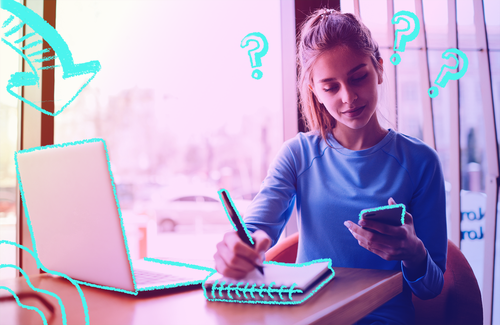Students will learn the basics of fact-checking a news story, and the difference between primary and secondary sources.

How do you make sure everything in a news story is accurate?
This lesson will help students understand how journalists fact-check their stories.
Use this lesson during the middle and at the end of your newsgathering journey. Fact-check while you’re preparing for interviews, writing your script, and again before publication.
This lesson will deepen students’ understanding of how reporters and editors make sure what they publish is accurate. It will show them the steps to take to ensure their own stories are free from factual errors.
Ensuring news stories are accurate is arguably the most important job of a journalist. With the rise of social media, misinformation, and online propaganda, it’s more important than ever for the public to be able to trust in the accuracy of the information they receive from the press.
Journalism is the activity of gathering, assessing, creating, and presenting news and information.
Belief that someone or something is reliable, good, honest, effective, etc.
An obligation or willingness to accept responsibility or to account for one's actions.
Something that is known or proved to be true.
A view or judgment formed about something, not necessarily based on fact or knowledge.
A source is an individual, company, document or more that can provide information to fuel a new story. In order for a story to be considered verified and to maintain a reputation as a news outlet, it is important to have a credible source.
Free from mistake or error. Coverage of topics and facts in appropriate detail.
The process of verifying the accuracy of a piece of information.
Historical inquiry is based on materials left from the past that can be studied and analyzed. (NCSS D2.His.9.9-12 - D2.His.13.9-12)
Explain points of agreement and disagreement experts have about interpretations and applications of disciplinary concepts and ideas associated with a supporting question and explain how supporting questions contribute to an inquiry and how, through engaging source work, new compelling and supporting questions emerge. (NCSS D1.3.9-12 - D1.4.9-12)
Students recognize the responsibilities and opportunities for positively contributing to their digital communities. (ISTE)
Students critically curate a variety of resources using digital tools to construct knowledge, produce creative artifacts and make meaningful learning experiences for themselves and others. (ISTE)
Whether students are constructing opinions, explanation, or arguments, they will gather information from a variety of sources and evaluate the relevance of that information. (NCSS D3.1.9-12 - D3.2.9-12)
Civics is the discipline of the social studies most directly concerned with the processes and rules by which groups of people make decisions, govern themselves, and address public problems. (NCSS D2.Civ.11.9-12 - D2.Civ.14.9-12)
Students develop and employ strategies for understanding and solving problems in ways that leverage the power of technological methods to develop and test solutions. (ISTE)
Journalism
Civics
Media Literacy
Science
Education
Digital Literacy/Citizenship
STEM
Broadcast News
Lessons
Beginner
White board, chalkboard or other visual board
Online Worksheet
Computers
Internet
50 Minutes
Discuss facts versus opinions. With students, review some definitions of facts and opinions on the worksheet. Brainstorm your own definitions.
Find the facts and opinions
Distinguish between primary and secondary sources
Fill out the Reliable Sources worksheet to explain what kind of information should be fact-checked.
Review the difference between primary and secondary sources. Discuss why it’s better to use primary sources.
Discuss how students decide what kinds of information to trust. Ask them how they verify information they see on social media, television, and in the news.
Reflection exercise: